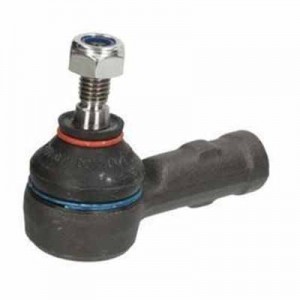TangRui Oem Ball Joint FOR OPEL-Z12068
Need New Ball Joints?
Ball joints have an important role in the safe operation of an automobile's steering and suspension. They connect the steering knuckles to the control arms. A ball joint is a flexible ball and socket that allows the suspension to move and at the same time allows the wheels to steer. Because the ball joint can move in two different directions at once, the suspension can, too. Vehicles may have multiple ball joint assemblies depending on the particular suspension system design.
What causes ball joints to wear out?
Spherical ball joints are designed to pivot through multiple planes. Since the ball joints constantly pivot at different angles, they can wear out quickly depending on your driving habits. The continual motion created by turning and driving on rough roads creates friction between the ball stud and bearing. The rougher the roads and the more frequent the turns, the faster the rate of wear on your ball joints.
Lack of lubrication can also cause ball joints to wear out quickly. The ball joints in most passenger cars and light trucks are sealed for life and do not need routine maintenance. These are often referred to as "low friction" joints since they generally have polished ball studs and synthetic bearings (as opposed to steel bearings). This design can help to minimize internal friction and allows for smoother steering.
Ball joints on older vehicles, however, contain grease fittings that do require periodic greasing. If the ball joints on your vehicle contain grease fittings, a grease gun is used to routinely add grease. This will minimize friction between the ball stud and bearing and help to flush out old grease and contaminants that can shorten the life of the joint.
A ball joints life span can vary from vehicle to vehicle and depends on usage, road conditions and exposure to road splash, dirt, sand and salt. If a ball joint is significantly worn and has reached the end of its service life – it should be replaced. Since ball joints impact steering and suspension, worn parts can leave the driver in a dangerous situation.
How to tell which ball joints are bad?
There are a few warning signs that your ball joints may be failing. Since many of these symptoms could be a variety of things, it's best to have a qualified mechanic inspect your vehicle.
Sounds
For most people, the first indication that they have a problem with their ball joints is a faint, intermittent clunking sound coming from underneath the vehicle. This sound is generally louder when going over a bump, pothole or turning corners. The noise may resemble someone hitting a piece of metal with a hammer.
As time goes on, the sound may become louder and more frequent. In fact, it's often more pronounced when the weight of the vehicle shifts off and back onto the wheel – for example when driving over a pothole. In some cases, it may even sound as if the bottom of the vehicle is hitting the ground.
Steering
Worn ball joints can affect the vehicle's steering. Drivers may notice loose or stiff steering. The way ball joints impact steering can vary – so it may be difficult to identify. It really depends on how the ball joint is wearing. If a vibration is felt in the steering wheel when driving down a straight, smooth highway – it may indicate a worn ball joint.
Tire Wear
Another sign of worn ball joints is uneven tire wear. If the outer or inner edges of the front tires are wearing faster than the rest of the tire tread, there is a possibility that the ball joint is worn. If both edges are wearing faster than the middle, it could just be underinflated tires. Cupping on the inner edge of the tread is also an indication of bad ball joints. This cupping is not usually visible, but should be noticeable by touch if a hand is run over the tread of the tire. Loose or failing ball joints will cause the vehicle to become misaligned. A vehicle out of proper alignment will contribute to the tire wear conditions discussed above.
Which ball joints are best for my vehicle?
There are a number of ball joint manufacturers including Moog, TRW and Driveworks. Depending on the type of vehicle, your driving habits, general road conditions in your area and other factors, a qualified auto technician can suggest the best type of ball joints to get you moving again. There are different suspension systems – some contain upper and lower ball joints, so replacement costs can vary depending on your vehicle. At Tangrui, we'll always follow the ball joint replacement guidelines in your vehicle's owner manual.
Replacing ball joints is not part of your routine maintenance. However, ball joints should be checked according to the manufacturer scheduled maintenance or mileage intervals, or during each oil service. Ball joints on most newer vehicles are sealed and do not require additional grease.
If you have any questions about ball joints or would like a visual inspection to ensure your vehicle is in safe operating condition, please contact us.
Application :

| Parameter | Content |
| Type | Ball joints |
| OEM No. | 324066 |
| Size | OEM standard |
| Material | ---Cast steel---Cast-aluminum---Cast copper---Ductile iron |
| Color | Black |
| Brand | FOR OPEL |
| Warranty | 3years/50,000km |
| Certificate | IS016949/IATF16949 |








